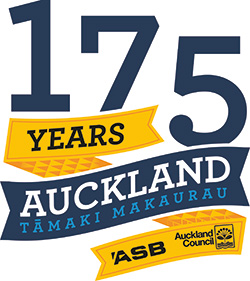Mike Mizrahi, creator of amazing events. Photo / Chris Gorman
"I'm an immigrant - a Turkish Jew from London - so I can picture exactly how the colonials must have felt when they sailed into the harbour and realised they were looking at the site of their new home," Mizrahi says.
"These people were incredible visionaries. They had to be, having left Britain in the midst of the industrial revolution, then building from scratch here with limited resources.
"They reclaimed land on the foreshore, laid out streets, erected buildings and got the city under way, all in a remarkably short time. It's hard to imagine, really.
"We've deliberately done everything on a large scale for maximum effect," he says.
Research took him deep into the heart of Auckland City's photographic archives, where the work of photographer Henry Winkelmann proved especially useful in recreating the early days of the city.
"Winkelmann was amazing. He wasn't just a casual snapper. He composed his shots incredibly well and climbed hills or even up flagpoles to get the best perspective."
On Quay St, visitors will pass through a "welcome arch" based on intricate floral structures traditionally built for royal visits and significant occasions, such as the arrival of the US' Great White Fleet in 1908.
In and around Shed 10, one of the last remaining connections with the glory days of Auckland port life, gigantic interactive billboards will show what Auckland looked like in 1840, their images transforming into the impressive harbour scene and striking cityscape of today.
"The selfie generation will really love this as it's a perfect backdrop for seemingly blending into history and somehow becoming part of it," says Mizrahi.
In a softly lit raupo hut, representatives of Ngati Whatua, Te Kawerau and Ngati Paoa will recount stories of an earlier Tamaki Makaurau.
Further exhibits show the changing cultural face of New Zealand's biggest city as immigrants from practically every other country in the world moved here since 1840. A dramatic portrait gallery of famous and not-so famous Aucklanders will be brought to life by modern personalities including the couple's actor friends, Michael Hurst and Elizabeth Hawthorne.
Although he doesn't want to give too much away, Mizrahi reveals Hawthorne will become Elizabeth Yates, elected Mayor of Onehunga by just 13 votes in 1894. She was the first female mayor in the British Empire and received congratulations from Queen Victoria.
"I guess these are the sorts of things lots of us simply haven't heard about, but to me there's something incredibly pleasing in seeing a contemporary Auckland woman representing an amazing, pioneering one."
Renowned artist Charles Goldie had a studio in Queen St, at the corner of Vulcan Lane, now occupied by an upmarket jewellery shop. "When you are given the means to picture these things - clearly - it begins to feel real," says Mizrahi.
He is adamant he wants the 175th anniversary to engender civic pride in the hearts of Aucklanders.
"Sometimes I think we have a little 'cringe' thing going on, but we simply shouldn't have.
"This is an amazing city - the very best in the world. I want people to go away feeling that they've learned something new, and maybe even be inspired to try to find out more about our history here together."

